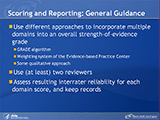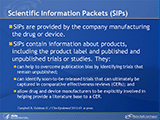- Home
- Slides
- Home
- Tools and Resources
- Research Summaries for Consumers, Clinicians, and Policymakers
- Search for Research Summaries, Reviews, and Reports
- Research Available for Comment
- Submit a Suggestion for Research
- Submit Scientific Information Packets
- Comparative Effectiveness Research Grant and ARRA Awards
- News and Announcements
- What Is Comparative Effectiveness Research
- Who Is Involved in the Effective Health Care Program
- What Is the Effective Health Care Program
Slides
Slides: 1–12 of 25
Potential Advantages and Disadvantages of IMRT When Compared With 2DRT and 3DCRT
Presentation: Comparative Effectiveness and Safety of Radiotherapy Treatments for Head and Neck Cancer
Keywords: 2DRT | 3DCRT | adverse events | head and neck cancer | IMRT | outcomes | safety | treatment | radiotherapy
Proton Beam Therapy
Evidence on the Comparative Effectiveness Regarding Quality of Life and Adverse Events
Studies Regarding Quality of Life and Adverse Events: IMRT vs. 3DCRT
What To Discuss With Your Patients
Operationalizing the Comparison Group in Comparative Effectiveness Research (1 of 2)
Keywords: comparison group | indication | initiation
Scoring and Reporting: General Guidance
Presentation: Grading Strength of Evidence
Keywords: body of evidence | Evidence-based Practice Center | transparency | GRADE | strength of evidence
Background: Using Coronary Angiography To Diagnose Coronary Artery Disease
Keywords: background | coronary artery disease | CAD | women | diagnosis | coronary angiography
Clinical Outcomes (1 of 2)
Selection of a Patient-Reported Outcome Measure
Scientific Information Packets (SIPs)
Presentation: Searching for Relevant Studies
Primary Data
Your slide tray is being processed.


 E-mail Updates
E-mail Updates










